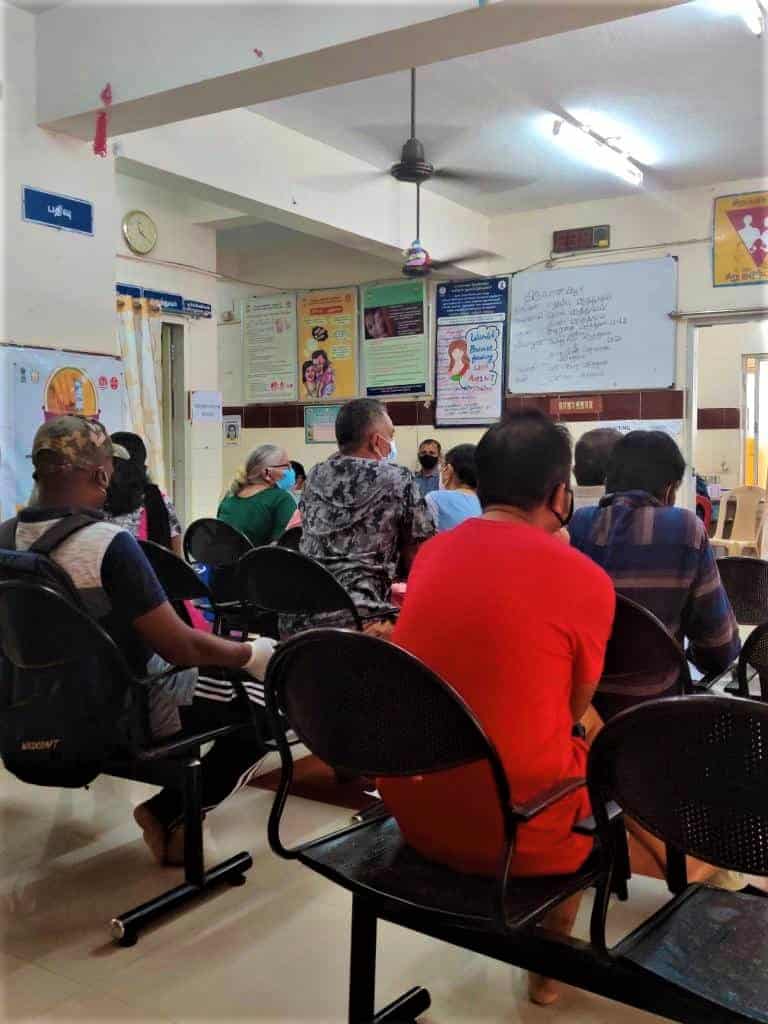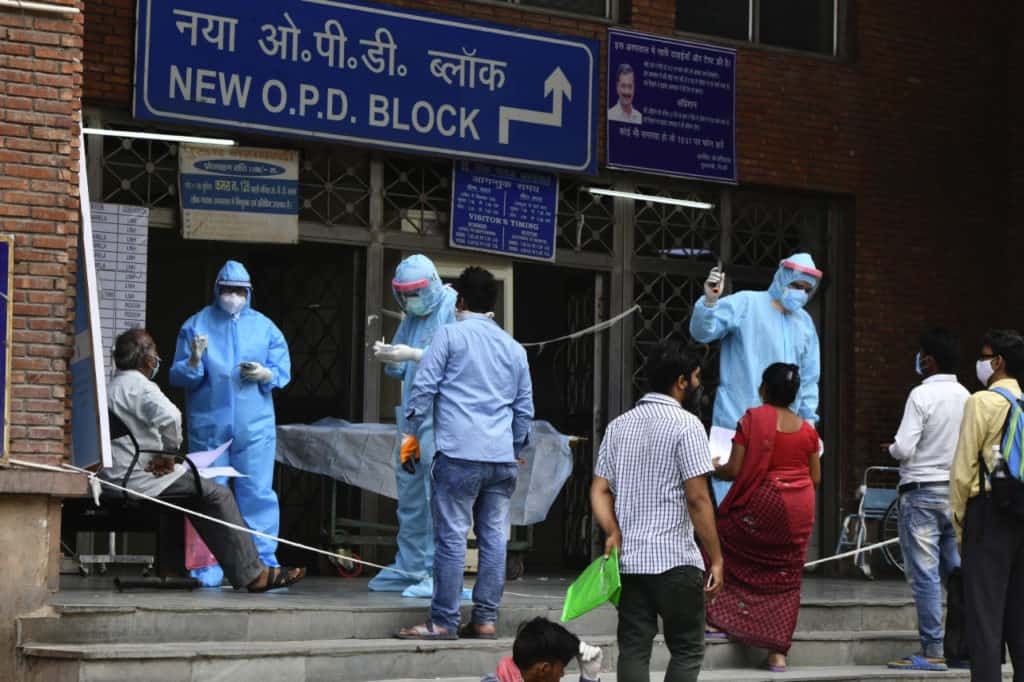Dead bodies floating in the Ganges and washing up ashore in neighbouring Bihar is just one in the long list of gory stories that we have been witnessing in recent weeks. Frantic calls for help from people struggling to find a hospital bed, oxygen, blood plasma, medicines and even places for cremation or burial, continue to flood social media platforms, even as the cost of saying the final goodbye becomes too steep for many.
And while citizens have come together to create resource pools, sharing leads and contact numbers, cross-checking and circulating them, union health minister Harsh Vardhan claims there is no shortage of oxygen.
Commoditisation of healthcare services has been happening for a long time. But in the Modi era, one of the principal modes of accumulation of capital happens to be rampant privatisation of services. Education and health are in the forefront here, where humongous amounts of capital are generated by private hospitals and schools, especially with big business having entered these segments.
In Delhi, though charges at private hospitals for Covid beds, ICU and ICU with ventilators were capped, at several hospitals patients are being asked for bulk upfront payments in order to secure beds. In a south Delhi hospital recently, an acquaintance was told a bed was available. A down payment of one lakh rupees was demanded, and the bed eventually allocated turned out to be a stretcher in the corner of a ward which was used to dump PPE kits!
Against state intervention
The BJP and RSS are known for their strong opposition to ‘state intervention’ in social development and since 2014, with a strong political mandate, the union government has pursued this line of thought vociferously. This government works on free market principles and some of its advisers, for example Sanjeev Sanyal, the Principal Economic Adviser to the union finance ministry, have been openly advocating dismantling of the country’s public health system.
In 2017, Niti Aayog came out with a set of guidelines which suggested Public Private Partnership (PPP) in non-communicable diseases like cardiology, oncological and pulmonary diseases, under which the private sector would get space for setting up treatment facilities within the premises of existing district hospitals. At the event to release the guidelines, Niti Aayog CEO, Amitabh Kant batted strongly for private participation in healthcare.
In a series of webinars after the 2021 union budget, in which government unveiled its new privatisation policy, the prime minister had said “government has no business to be in business”. He also called for private sector participation in Ayushman Bharat Pradhan Mantri Jan Arogya Yojana via the PPP model. The National Health Policy released in 2017, while stressing on increasing the share of healthcare expenditure to 2.5 per cent of the GDP, promotes private sector pitching for “strategic purchase of secondary and tertiary care services”. A PMO statement said the policy views the private sector “as strategic partners”.
The result: This ideological mooring of the BJP that led to the systematic dismantling of the already poor public health sector and its institutions and made way for large-scale privatisation, or commoditisation, of health.
So, how is this relevant in today’s pandemic times?
The absent private sector
Today, the private sector is completely absent as the nation struggles to meet the challenges of the pandemic. Before the pandemic struck, nearly 80% of outdoor patients and almost 60% of indoor patients were directed towards the private sector. The private sector that developed post-1990s, unlike hospitals like the Sir Ganga Ram Hospital in Delhi, are motivated purely to treat healthcare as a commodity.
Read more: Opinion: How to break the inertia and solve the hospital bed crisis
This article does not go into details of how the public health sector was dismantled. But now we do have a strong advocacy from doctors, public health experts and citizens who are raising their voice to bring healthcare under the public good and to nationalise it.
Apart from basic healthcare being compromised, India’s vaccination drive against COVID 19 has also been impacted by this degradation of the public health sector. The two Indian vaccines, Covishield manufactured by Serum Institute and Covaxin by Bharat Biotech, are among the most expensive ones in the world. While the PM on several forums promised the vaccine to the world, India’s drive to vaccinate all its own adults has considerably slowed down due to unavailability of vaccines.

Vaccine prices have shot up as well. While the government was procuring the vaccines at Rs. 150 each, prices now vary between Rs. 700-900 for Covishield and between Rs 1,200 to 1,500 for Covaxin.
A truant state
But what we are focussed on here is the way our systems have been degraded and how this systemic failure has resulted in the country being unable to deal with the COVID second wave. The question being asked is: Where is the State? I mean not the state governments, but the State as a structure, which is governed by a constitution and has certain duties to perform and safeguard the safety of lives and livelihood of people, the main reason for its existence. What is the State for, if it cannot protect the lives of its people?
Let us once revisit last year’s four-hour notice given for a national lockdown announced by the Prime Minister. Those stories and pictures of the long journeys back to their homes on foot of migrants workers still haunts us. But the point that needs to be stressed is that while many nations provided massive relief to their people in the form of cash transfers, remitting their rents, and ensuring that tenants are not evicted from their houses, at home, despite the IMF suggesting not to worry about the fiscal deficit, the government provided one of the poorest support systems in the world.
Action Aid, a civil society group working in India, did research on migrant workers with a database of more than 10,000 workers. The survey showed 89 per cent of the workers did not get any relief from the government. Only a little more than 10% got the benefits. The remaining were supported either by civil society groups, trade unions, individuals, and/or other social groups. Interestingly, in an affidavit filed by the union government in the Supreme Court, it mentioned that of the total relief camps being run, 65 per cent were in Kerala alone.
Read more: Ill-planned, ill-executed PPP projects behind Uttarakhand’s crumbling health services
‘Minimum government’
‘State’, is a bad word in the vocabulary of BJP and RSS and even worse is ‘state intervention’. They term it to be Nehruvian economics and are totally against State intervention in the social sector, which has landed us in the present mess.
“Minimum government, Maximum governance,” was the Modi mantra. Explaining what this means in an interview to a news channel in 2019, Modi said “Till now, I have cleared projects worth around Rs 12 lakh crore in just an hour. ………… I maintain that it’s not government’s responsibility to run a hotel, you might have seen that we are doing disinvestment slowly”.
From not running a hotel, the union government extended this mantra to not running hospitals and public healthcare system. And relied more on insurance-based health systems rather than universalisation and strengthening of public healthcare. As a result, what we are witnessing at the end of the day is minimum governance and complete abdication of its responsibilities.
But despite a near-universal criticism of Modi for his utter failure to heed warnings about a second wave and take appropriate action, the union government continues to spend huge amounts of money on the central vista project which has been declared an “essential project”, more essential than the health emergency facing the country. More essential than producing vaccines. And even more essential than providing oxygen to patients.
It is therefore not a surprise that the era we are living in demands extraordinary churning and realignment of forces to ensure that the most civic part of our civilisation, to live with liberty, fraternity, and independently as citizens and not as ‘ruler-ruled’ subjects is preserved.
Hoping that we all survive this pandemic and the present discourse.
